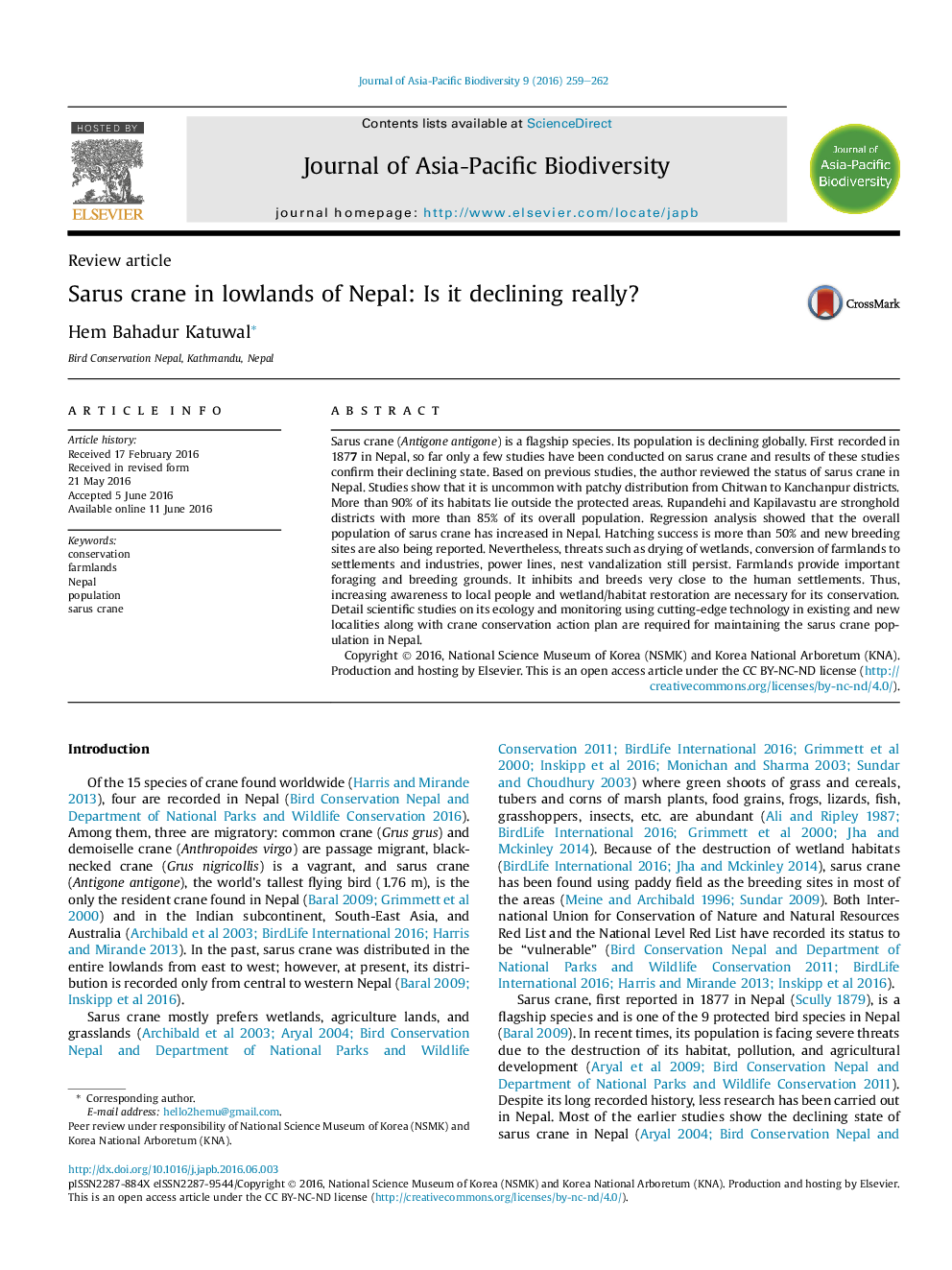| Article ID | Journal | Published Year | Pages | File Type |
|---|---|---|---|---|
| 4394920 | Journal of Asia-Pacific Biodiversity | 2016 | 4 Pages |
Sarus crane (Antigone antigone) is a flagship species. Its population is declining globally. First recorded in 1877 in Nepal, so far only a few studies have been conducted on sarus crane and results of these studies confirm their declining state. Based on previous studies, the author reviewed the status of sarus crane in Nepal. Studies show that it is uncommon with patchy distribution from Chitwan to Kanchanpur districts. More than 90% of its habitats lie outside the protected areas. Rupandehi and Kapilavastu are stronghold districts with more than 85% of its overall population. Regression analysis showed that the overall population of sarus crane has increased in Nepal. Hatching success is more than 50% and new breeding sites are also being reported. Nevertheless, threats such as drying of wetlands, conversion of farmlands to settlements and industries, power lines, nest vandalization still persist. Farmlands provide important foraging and breeding grounds. It inhibits and breeds very close to the human settlements. Thus, increasing awareness to local people and wetland/habitat restoration are necessary for its conservation. Detail scientific studies on its ecology and monitoring using cutting-edge technology in existing and new localities along with crane conservation action plan are required for maintaining the sarus crane population in Nepal.
